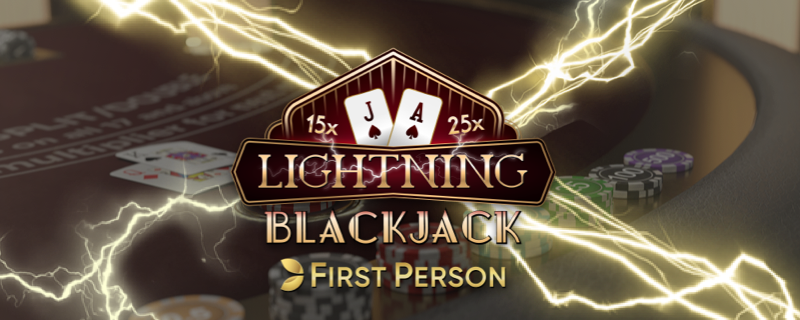How to correctly price horse racing and lay horses on BETDAQ
Traditional bookmakers have more markets now than ever before, but for the most part you can only back something to happen, rather than take the view that it won’t happen. On betting exchanges like BETDAQ though, you also have the option to lay a horse, a team, or anything else from the multitude of sports and special bets on offer. When backing a horse to win a race, you should be doing it because you think it has more chance of winning, than the odds suggest, while when laying a horse, it should be because you think it has less chance than the odds you’re offering. To do either successfully you need to first estimate what chance you think the horse has, and the best way to do that is to price up all the horses in the race, with the combined percentages adding up to 100%.
When I’m trying to estimate a horse’s chances of winning, the first thing I will do is have a quick look through all the declared runners to get a feel for what sort of rating I think the horse will have to run to, in order to win the race. I use a combination of Timeform and Racing Post ratings as a starting point, which I then adjust to then come up with my own rating for each horses past performances. I will then come up with a figure adjusted for weight carried, and price each horse, according to what chance I think they have of running to that figure under today’s conditions. With practice you will get quite good at estimating a figure that will result in a book very close to the 100% you need to be aiming for to get each horses true odds, after you’ve done every horse.
One advantage of this method is, that once you get good at estimating that figure, you will then have a very good estimate of each horse’s chances, even before you price up the remaining contenders. For accuracy though you should do this for every horse, and then once you’re finished, add up all the percentages you’ve come up with. If your initial rating you were aiming at was a good estimate, they should be somewhere near 100% now, but even if you’re a good way off, you can now adjust each horse’s odds in or out, until your percentages add up to one hundred.
I find it really helpful to break down my estimation of a horse’s chances into parts. It can be very hard to assess all the variables that effect a horse’s chances of winning in one go. The amount of conflicting information can make it difficult. For example, say the horse had a very good run on its penultimate start, but then ran poorly last time, the track is different today, but he has a good draw.
Processing all of that can be hard, so I think the best way is to first price the horse as if the good run was last time out, and the track is the same. Say you think you’d rate him a 3/1 shot under those circumstances. Then account for the fact his good run was at a different track, this could be a negligible effect, or if he was a course specialist at that track, it could be a big negative. So say you now make him a 7/2 shot, you can then adjust for a bad run last time, if he had a very valid excuse, you might leave him on 7/2, or maybe go 4/1, but if he had no excuse and ran like a horse needing a break, you might go as high as 10/1. You might then decide the good draw is enough to bring him back into 8/1.
No matter what the circumstances you can break it down and then adjust your odds as you add each variable back into the mix. By holding all other variables constant, it makes it much easier to weight each individual variable. Another example would be a horse who won last time, but is now up in trip, and off a three-month layoff. Again you can first price it as if it’s the same trip as last time, and the run was two or three weeks ago, which would be regarding as a neutral time off. You can then decide if a three-month layoff should increase that horses price, and after that account for the increase in trip.
When trying to find good value back or lay bets, you only have a certain amount of time, and you need to use it wisely. Personally I only look at a race if I already have a reason I think a certain horse will be a good bet. It may be because I think he had a very valid reason for a poor run last time, that the market has missed, or I thought he was much better than the result, again with the expectation that the market as a whole will have underrated the run. For laying horses it might be because I thought an impressive winner last time, was actually flattered, and I expected it to be over bet next time.
With this in mind when I look at a race I may be only interested in one or two horses as a potential bet, and as such it’s my estimation of their chances that is important, and while I might still price up every horse in the race, I won’t waste my time trying to get exact predictions on the outsiders. It’s just not a good use of my time. If I make two horses 33/1, and it turns out that had I spent more time on them, I would have made one of them 20/1 and the other 66/1, then the percentages add up to around the same, and at those odds it will have little effect on the estimate you come up with for the horse you were actually interested in anyway.
That’s just the way I bet, you can of course price up every horse, and then back the ones that are a certain percentage bigger, or lay the ones that are a certain percentage lower than your estimation. I just find it better to also have a reason why you’re right, and the market is wrong. In any case even if you price up a race without any preconceived idea about which horse you’re interested in, it is always a good idea to ask yourself afterwards, why you are right, and why you think the market may have got a price wrong on any horse where your opinion differs enough to make you think about either backing or laying it. You may have missed something, and now is the time to investigate some more.
They’re just some tips that I use when estimating a horse’s chances, so now onto an example from a mythical race. I’ve added a table for presentation purposes, but it is easier to use excel when pricing up a race yourself, as you only need to enter your estimation of a horse’s chance in the decimal odds column, and then a few simple formulas’ in the other cells to generate the percentages. You can reuse the sheet again and again once you’ve made it up.
Once you’ve entered your decimal odds, so 4/1 would be 5.0, you just need a simple 100/decimal odds formula to get the percentage. You can then sum all the percentages, which add to 104.17% in this case. Obviously to get an accurate estimate your percentages must add to one hundred, so you need to divided each percentage by 1.0417. To get the correct figure to divide by, you just divide the summed percentage of 104.17 by 100, which gives 1.0417 in this scenario, which will then mean the adjusted percentages will add to one hundred, and these can then be converted back into decimal odds by the formula 100/adjusted percentage.
As I mentioned earlier to come up with your first estimate for each horse, you would need a rough idea of what kind of rating each horse would need to run to in order to win the race. You will get quite good at this, so much so, that you will come up with a very good estimate even without pricing up every other horse in the race. Most times after your first attempt you will end up with a book of between ninety and one hundred and ten percent. You can use the method above to adjust the prices so the book adds up to one hundred, and you can also make manual adjustments to the decimal odds you entered so that you’re happy that the adjusted odds represent your opinion on each horse’s chances.
Now that you have an estimate of the chance you believe each horse has, you need to check the Betdaq markets to see is there any value to be had. For backing horses that will mean getting a sufficiently bigger price than your estimate, and for laying it will mean being able to lay at a price you think is too short. You can also do what a bookmaker does and use your estimates to try to lay every horse in the race. Say for a ten horse race, instead of adjusting the odds to 100%, you could adjust them to 120%, and then use the adjusted odds to lay any horse you can. With market fluctuations you will find that sometimes you are able to lay the whole field for a guaranteed profit, before the race even starts.
The over round you pick is entirely up to you, the nearer it is to one hundred the more bets you will get matched, but the less theoretical value each will represent. In general, even if you are happy to lay at 5.0 for example, then you shouldn’t immediately offer a price of 5.0, if the top price in the market is just 4.0. Like everything else you should try to get the best deal you can, and that might mean offering 4.1, and then if someone else offers 4.2, you could go 4.3, but never go bigger than the 5.0 you’re happy to lay at. There is free software called Bet Angel available to use with BETDAQ that enables you to place triggered bets from excel, which with a few simple formulas, you can link to the adjusted lay prices you have for each horse.
When trying to lay the field like this, you need to adjust your stakes according to the price you’re laying the horse at. Level stake staking is hugely flawed; you should almost never be having the same amount on a 20/1 shot as a 1/1 one. With both back and lay betting I always stake to return a certain amount. So say you want to stake to return €200, that would mean backing a horse at 10.0 for €20, and also laying a horse at 10.0 for €20. Your liability on the lay bet would be €180. You will likely lay more than one horse per race when laying the field, which will decrease your liability, but you should always be aware of your maximum liability too. Again a few simple formulas in excel can be set up to use with the triggered betting applications that work with BETDAQ.
You can come up with more advanced spreadsheets to enable you to use the market price for horses you find hard to price up, like say horses coming back from a long absence, or a newcomer for instance, but for the moment the method I outline above is a good starting point, there’s never a better time to start practicing so why not start now? It’s very likely you’ll enjoy the process, and when you get good at, you might make some money at it too.
Declan is the author of LearnBetWin.com and cheltenhamtips.ie while you can follow him on Twitter at @declanmeagher76








